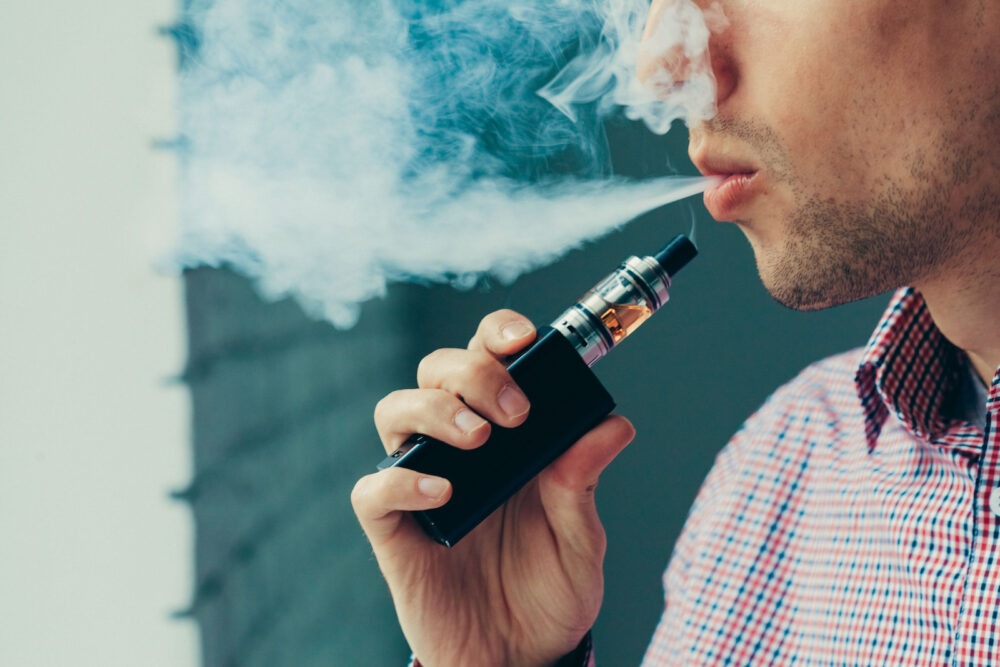Table of Contents
The U.S. continues to face the ongoing challenge of drug addiction, with millions struggling every day. In 2020 alone, around 40.3 million people in the U.S. were dealing with a substance use disorder.
While drugs like cocaine and heroin often grab the spotlight, prescription medications can pose hidden dangers. Suboxone is one example. It’s a medication meant to help with opioid addiction but one that can ironically lead to dependence, tough withdrawal symptoms, and various Suboxone side effects.
What is Suboxone?
Suboxone is a formulation of buprenorphine and naloxone that has been designed to help treat narcotic addiction to opioids. It can be prescribed to those living with a daily opioid addiction.
Similar to how methadone works, Suboxone binds with the opioid receptors to help reduce or eliminate withdrawal symptoms and the severity of cravings. It’s a partial opioid agonist, meaning that it prevents the body from engaging in withdrawal symptoms by directly engaging with some of the opioid receptors in the brain.
In addition, it is a more viable alternative to narcotic agents because it has a low relative potential for addiction.
Suboxone comes in a form different from most other medications. It comes as a sublingual strip. This strip is placed under the tongue when it is taken, where the strip quickly dissolves and is absorbed through the mucous membranes, taking effect just a few seconds after administration. This allows it to be taken only once the withdrawal symptoms are serious enough and discreetly enough that it can be done anywhere, without something to drink.
What is a Partial Opioid Agonist?
When dealing with drugs that affect or interact with the brain, an agonist is a term used for a substance that activates specific receptors in the brain. When full agonists attach to receptors in the brain and activate them, the opioid receptor activation results in the user feeling the full opioid effect. You have probably heard of full agonists before. They are some of the most popular opioids, like heroin, methadone, morphine, and opium.
Other drugs, known as partial agonists, bind to the receptors and either do not activate them or only activate them to a small degree. These drugs are usually used to treat or mitigate opioid addictions and include substances like Buprenorphine.
Chemicals that bind to the receptor but do not activate the receptor at all or prevent activation are known as antagonists. Antagonists are drugs that can completely block and prevent the feelings caused by full agonists like heroin. Drugs in this category include Naloxone and Naltrexone.
What Are the Side Effects of Suboxone?
The most common side effects of Suboxone use, misuse, or abuse include:
- Strong and persistent headaches
- Constipationor iarrhea
- Nausea
Suboxone can still provide a very mild, opiate-like relaxation, which is why many users are drawn to Suboxone. Unfortunately, this can lead to a strong addiction or dependence, making relapse more likely. On top of these, there are other short-term and long-term side effects to consider.
One of the features of the Suboxone brand of buprenorphine is that it contains a naloxone component as well. This allows the management of the withdrawals in the long-acting formulation, but it is defeated if the drug is not taken sublingually (under the tongue) and is injected instead. If Suboxone is injected, the naloxone component can send the user into immediate withdrawals since it is a full antagonist and will stop any other opioids from binding with the appropriate receptors.
Short-Term Side Effects of Use
Suboxone is a “long-acting” opioid since it can remain functional in the user’s system for up to four days. This also means the overall risks are slightly lower since the doses are spread out and less intense. Even at higher doses, Suboxone is known to cause fewer breathing-related complications than other opioid addiction-management compounds, like methadone.
Taking Suboxone with alcohol or benzodiazepines can result in:
- Dangerous sedation
- Nausea
- Depressed breathing
- Possibility of coma and death
These risks are often taken in pursuit of the desirable effects of Suboxone use. These effects include:
- Significant pain relief
- Mild euphoria
- Lessening of opioid cravings
- Sleepiness
- Confusion
Side-Effects of Addiction & Chronic Use
When Suboxone is abused, it will be used for longer than intended, creating side effects for many users. The primary indications that Suboxone may have been taken for too long include constipation, nausea & vomiting, achiness, sleep disruption, moodiness and irritability, and fever.
When someone is using Suboxone to treat a legitimate addiction, taking it for long enough can also result in its tolerance and the buildup of physical dependence on it. This means that suddenly stopping Suboxone use may result in the onset of withdrawal symptoms.
The Suboxone withdrawal symptoms will often include:
- Anxiety
- Yawning and restlessness
- Red or teary eyes
- Dilated pupils
Suboxone Long-Term Side Effects
The most common long-term side effects of Suboxone are depression, anxiety, sleep disruption, or insomnia. Other risks of using Suboxone simultaneously with other opioids include:
- State of confusion
- Dizziness
- Constricted pupils
- Dangerous drop in blood pressure
- Respiratory depression
- Hallucinations or delusions
- Seizure
- Coma
There are also secondary effects often seen as a result of long-term opioid use, whether from Suboxone or another, and they are often indicative of a problem that has been building for some time. These problems include:
- Difficulty effectively maintaining relationships.
- Trouble meeting personal, educational, professional, or domestic responsibilities.
- Financial challenges presented by the use of the drug uncontrollably.
- Legal problems created by the use of the drug and subsequently getting arrested either for use or related behavior.
Why Long-Term Suboxone Use May Hinder Recovery
While Suboxone is considered a safer alternative to stronger opioids like heroin, long-term use is still dangerous. Not only is long-term use loaded with potential physical and psychological risks, but it does nothing to address the underlying issue of addiction. It just makes the addiction somewhat safer.
As a partial opioid agonist, Suboxone still provides mild opioid effects, which can create a reward for the user. Even though this reward diminishes greatly for those simply trying to use it for maintenance, it doesn’t entirely discourage Suboxone use and still presents some risk of addiction.
Suboxone has also been shown to have other long-term use side effects that could be difficult or even painful to deal with. The primary substance in Suboxone, buprenorphine, is known for increasing the overall risk for dental problems while taking the drug. These issues can include tooth decay, cavities, tooth loss, and an increased prevalence of oral infections.
For these reasons, Suboxone should only be used for addiction treatment on a short-term, temporary basis. If you’re struggling to detox from Suboxone or the other drugs it was meant to help with, then it may be time to seek help from addiction professionals. Quitting opioids alone is rarely successful, but personalized treatment plans have a much higher long-term success rate.
How to Detox from the Side Effects of Suboxone or Other Drugs
Detoxing from Suboxone or any opioid is tough, and having professional support can make a big difference. While some people try to detox at home, it’s a risky process that can lead to complications.
For a safer, more comfortable detox, turning to addiction professionals is key. In a medically supervised setting, you’ll have the care you need if challenges come up, plus access to a personalized treatment plan tailored to your specific needs.
If you or someone you care about is struggling with Suboxone dependence, you don’t have to face it alone.
Reach out to Infinite Recovery today. Our compassionate team is here to offer evidence-based treatment and the support you need to take back control of your life. Start your journey to lasting recovery and take the first step toward a healthier, happier future.

















